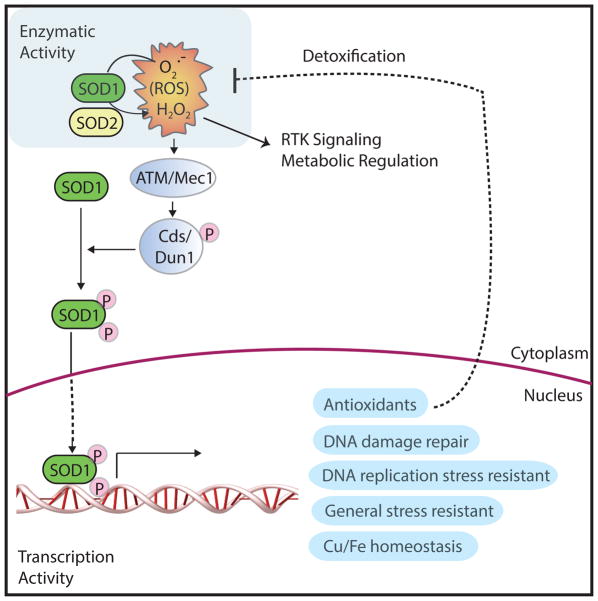Figure 3.
Role of superoxide dismutases (SODs) in the regulation of redox homeostasis and cell signaling. In addition to the classical function of SODs [i.e. to dismutate superoxide ion into hydrogen peroxide (H2O2)], SODs are increasingly recognized to regulate diverse cellular processes from mitogenic signaling to oxidative stress response. The H2O2 product in turn can activate receptor tyrosine kinase (RTK) signaling. SOD1 also acts as a transcription factor regulating oxidative stress response. When H2O2 reaches an excessive level, it activates the checkpoint kinase ataxia-telangiectasia mutated (ATM) kinase, which promotes SOD1 phosphorylation by Cds/Dun1 kinase and SOD1 localization into the nucleus where SOD1 acts as a transcription factor for a large panel of genes involved in oxidative stress responses.

